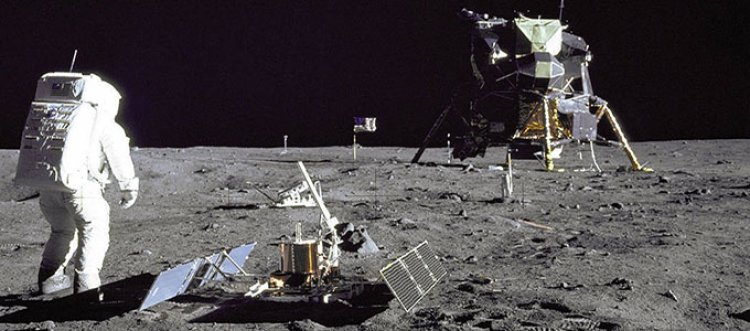Our Moon is in Danger
Space tourism poses a threat to the "symbols of human achievement" left on the Moon's surface.

Space tourism poses a threat to the "symbols of human achievement" left on the Moon's surface. The World Monuments Fund (WMF) has, for the first time, included the Moon in its list of endangered historical sites, highlighting the risks posed to the landing sites of early lunar missions by commercial space travel.
Every two years, the WMF publishes a list of 25 sites endangered by climate change, tourism, conflict, and natural disasters. The organization has played a key role in efforts like improving flood defenses in Venice, restoring the Mahadev Temple in Nepal, and protecting several temples in Cambodia's Angkor Wat complex.
The latest list, published on Wednesday, includes sites from 29 countries, such as the devastated urban landscape of Gaza and the Swahili Coast spanning four East African countries. For the first time, it also features an extraterrestrial heritage site: the Moon.
The organization stated, "With the dawn of a new era of space exploration, the physical remnants of early lunar landings are at risk, threatening these enduring symbols of collective human achievement." On July 20, 1969, when Apollo 11 landed in the Sea of Tranquility, 650 million people on Earth watched as humans walked on the Moon's surface for the first time.
Apollo 11 astronauts left 106 artifacts at the Tranquility Base landing site, including the lunar module, scientific instruments, and Neil Armstrong’s iconic boot prints.
WMF explained, "Tranquility Base is one of over 90 historic landing and impact sites marking humanity's presence on the Moon, bearing witness to some of our most extraordinary feats of courage and ingenuity." While the absence of wind and flowing water has preserved these sites in a relatively stable state, the organization warned that "the recent resurgence of human activity on the Moon, including a rapidly growing commercial space industry," puts them at risk.
On Wednesday, SpaceX launched two lunar landers, while NASA's repeatedly delayed Artemis III mission, planned for 2027, aims to return humans to the Moon. Meanwhile, China has scheduled three unmanned lunar missions between 2025 and 2028, with plans for a manned Moon landing by 2030. Although no commercial tourist landings are currently planned, companies like SpaceX, Virgin Galactic, and Blue Origin have expressed interest in taking paying customers to the Moon.
WMF warned, "Future missions and exploitative activities by private lunar exploration, such as collecting souvenirs and looting, could ultimately endanger this unique cultural heritage, removing artifacts and erasing iconic prints and tracks from the Moon’s surface forever."
At present, no dedicated international agreement addresses the preservation of lunar heritage. However, in 2023, a group of archaeologists and scientists formed the International Scientific Committee on Aerospace Heritage to promote the protection of "humanity's tangible and intangible aerospace heritage." The organization has called on world leaders to draft a formal treaty to safeguard lunar sites from commercial exploitation.






















